A Modern Fakir and His Ethics of Relation
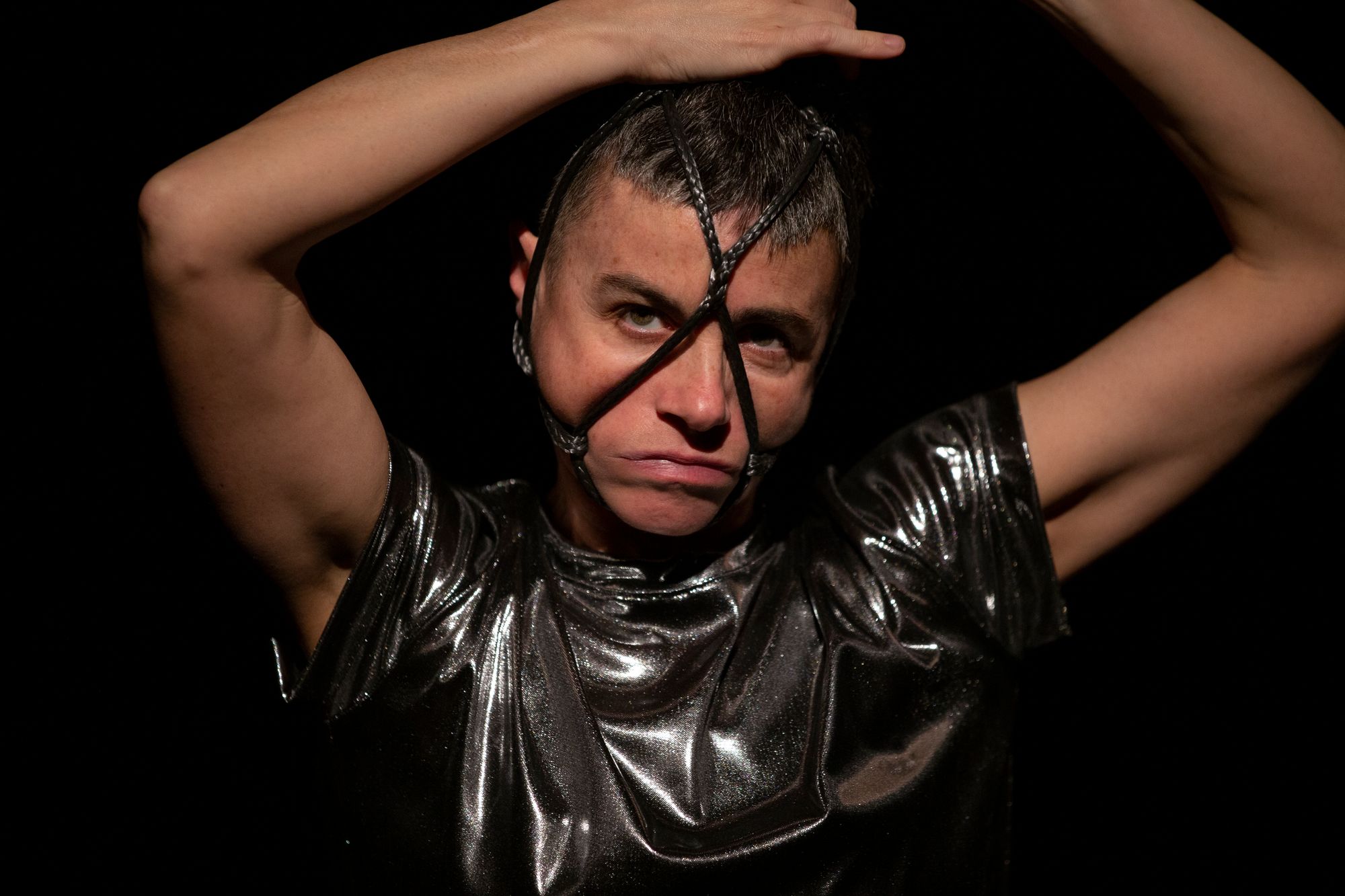
In EZ, Elena Zanzu plays with pain, constriction, manipulation, and consent. Your task? To help.
To talk about negotiation, consent, and care as the subjects of EZ, Elena Zanzu’s brilliant and unsettling solo performance, which showed at the CircusDanceFestival in Cologne in May, would be accurate – albeit perhaps too easy on the surface.
The title, in addition to being the artist’s initials (and a tribute to his possible future deadname as a trans person), means “no” in Basque. By taking “no” seriously, in his invitations to include the audience in his experiments with pain, constriction, and manipulation on stage, he makes the possible “yes” safer and more expansive.
It is difficult to communicate the edges in these concepts, however, perhaps because they are at constant risk of being dulled by sloppy deployment, the large ethical and philosophical questions they lead onto elided in favor of neat (and necessary) answers.
Exactly where does personal agency begin and end? What is the substance of trust? Are all relationships sadomasochistic? What does it mean to know and make peace with suffering, loneliness, and life’s closeness to death? And finally, having made that peace, what does the Self become – or dissolve into?
Zanzu’s work asks these and other questions with disarming equanimity, tenderness and generosity. But EZ is not for the fainthearted. The Italian performer and researcher, now based in Barcelona, has long since been attracted to extreme physical practices – including those that require the artist to temper or transcend fear and the instinct for self-preservation. EZ kicks these themes into high gear, without any trace of spectacle for spectacle’s sake. The show is the result of years of sustained research into techniques and methodologies ranging from apnea training to circular breathing, shibari bondage to circus rigging, accessibility practices to consent negotiation. What emerges from this cross-pollination is singular and deeply probing.
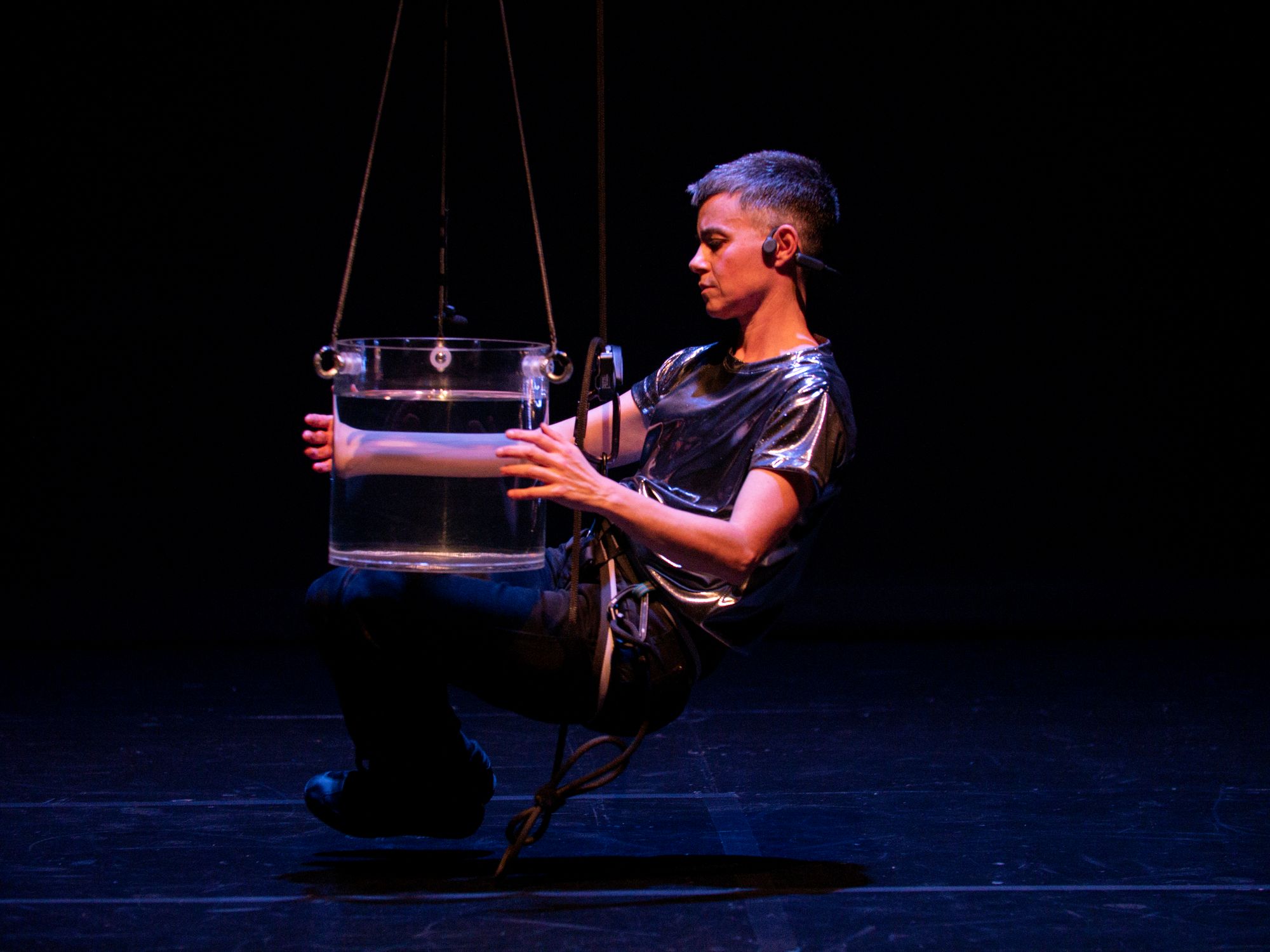
In the opening segment, Zanzu attached himself with a harness to one end of an elaborate pulley system, and secured a transparent bucket of water at the other end for counterbalance. The two bodies circled around each other just off the ground, then ascended together to a height of roughly three meters. This was Zanzu’s secluded, safe space. The design created a sense of solitude elevated above the audience to embark on his first experiment – a sort of proving-ground or passageway, in which the artist encounters (and remarkably, does not fight against) what he elsewhere refers to as the “death sensation.”
Zanzu inverted himself and plunged his head into the bucket, which was illuminated by flashlights (by then, the only source of light). He stayed this way in complete stillness for what felt like three minutes. Like so much endurance work in performance, what this moment accomplished was to safeguard the space necessary for emergence. A collective energetic shift took place, so that the show proceeded on an affective and energetic register that wouldn’t have otherwise been accessible.
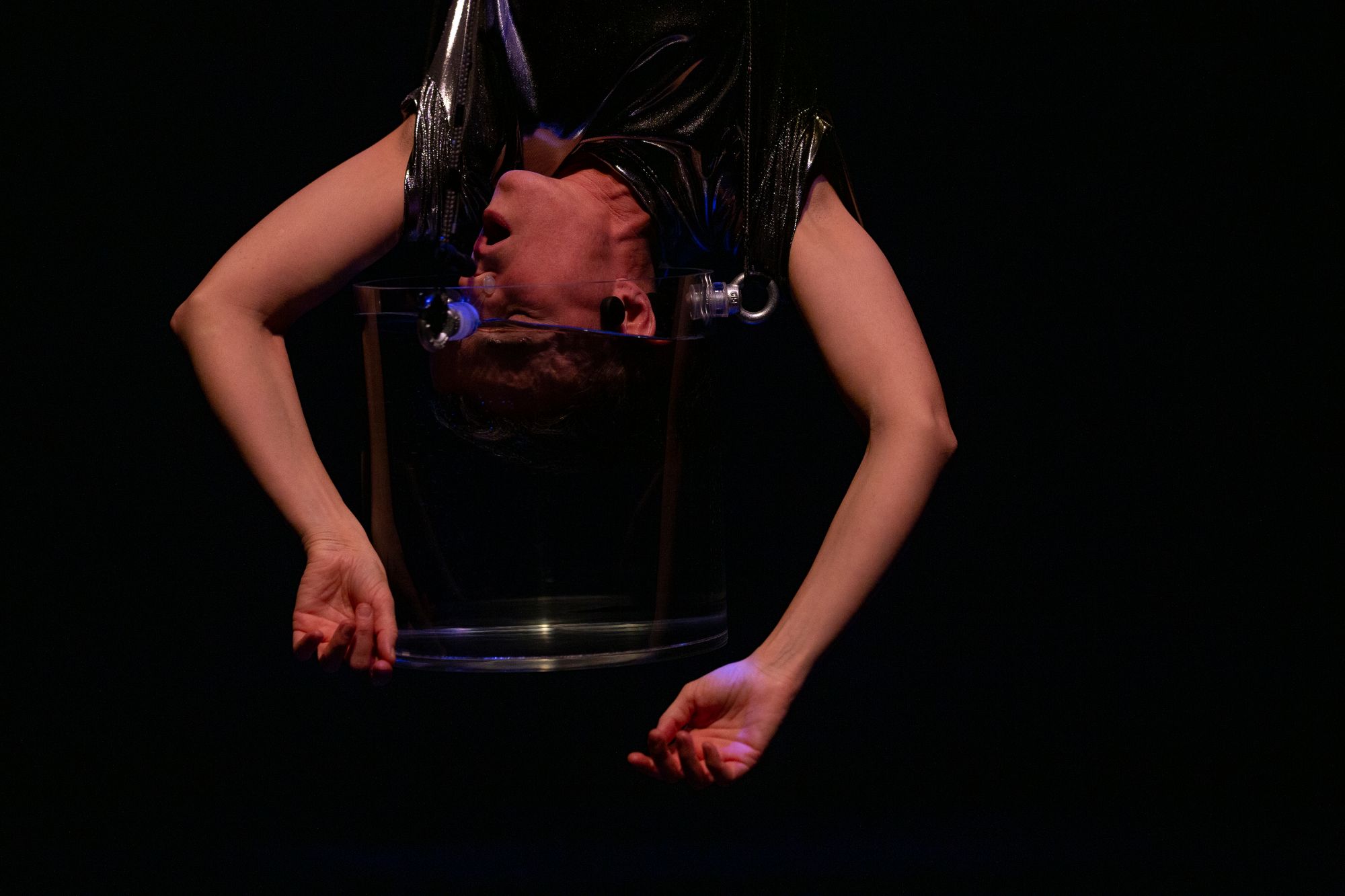
Having walked up to the edge of oblivion, Zanzu descended back to the ground and turned his solitary experiment into a dialogue. “Che si può fare?” he asked the audience. What can be done? With this neutral question, a vast territory opened before us, daunting in its scope and implications.
Zanzu sat down to intricately wrap his head and face with a specially designed jute rope, complete with a loop at the crown that he later used to rig himself from the same pulley system. This feat, which combined the ancient traditions of hair suspension in circus and Japanese shibari, was impressive both for its technical inventiveness and for the psychological aspect of pain tolerance.
After his brief solo sequence with this new mode of suspension, a voiceover track invited one audience member to dawn a harness and enter a counterbalance relationship with Zanzu, noting that while it would be safe for both, it would inflict substantial pain on the latter. Far beyond the usual parameters of “audience participation,” this invitation prioritized relationship as the material itself. Care and consent were not boxes to check, but organizing ethics that constituted the reflexive “we” that emerged, morphed, and balanced itself along the way.
Zanzu is far from the first to wade into the territory between circus and BDSM – or rather, to explicitly point out the obviousness of this overlap. The Canadian scholar Jordana Greenblatt, for example, has written on aerialists’ tendency to gravitate toward their niche disciplines not just out of aesthetic interest, but also out of an appetite for the “planes of intensity that playing on and with [their specialized equipment] enables them to traverse.” (1) Both forms intermingle pain and play, and complicate the meaning of control and power for a body willingly subjected to risk.
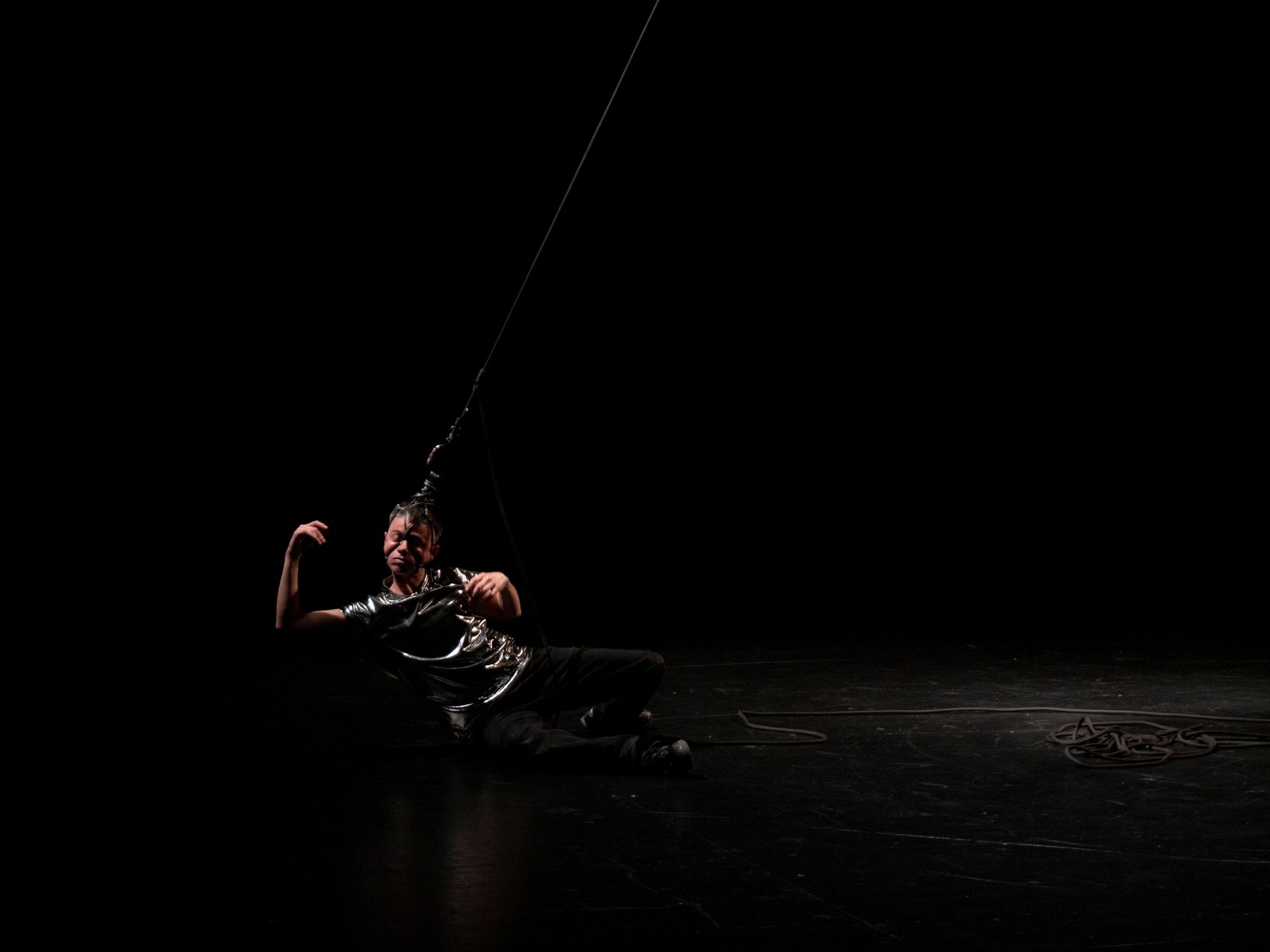
What mades EZ so affecting was that it so believably located oblivion (what these practices of transcendence aim to encounter) in both solitude and interdependence. The audience was invited to glimpse this terrifying vastness alongside Zanzu, only to understand finally that we are looking at each other.
At no point was this realization clearer, more potent, or more heart-wrenching than at the very end, when Zanzu attained his greatest height of acceptance and humility. He placed a new rope in the hands of each audience member seated in the front row, which included me. This rope fed through a pulley system anchored on the ground off one wing of the circus tent. He hooked the other end to the loop still jutting from his head, and then laid down in the middle of the stage. The rest was out of his control.
And so: What can be done?
We in the front row looked around at each other, looked at Zanzu, who was looking at us. After a moment of hesitation, in which I at least felt the heaviness, humor, and levity of the invitation, we knew what to do.
- Greenblatt, J. (2021). Aerial, apparatus, assemblage: Pain, pleasure, kink, and the circus body without organs. Sexualities, 0(0). https://doi.org/10.1177/1363460720986923
